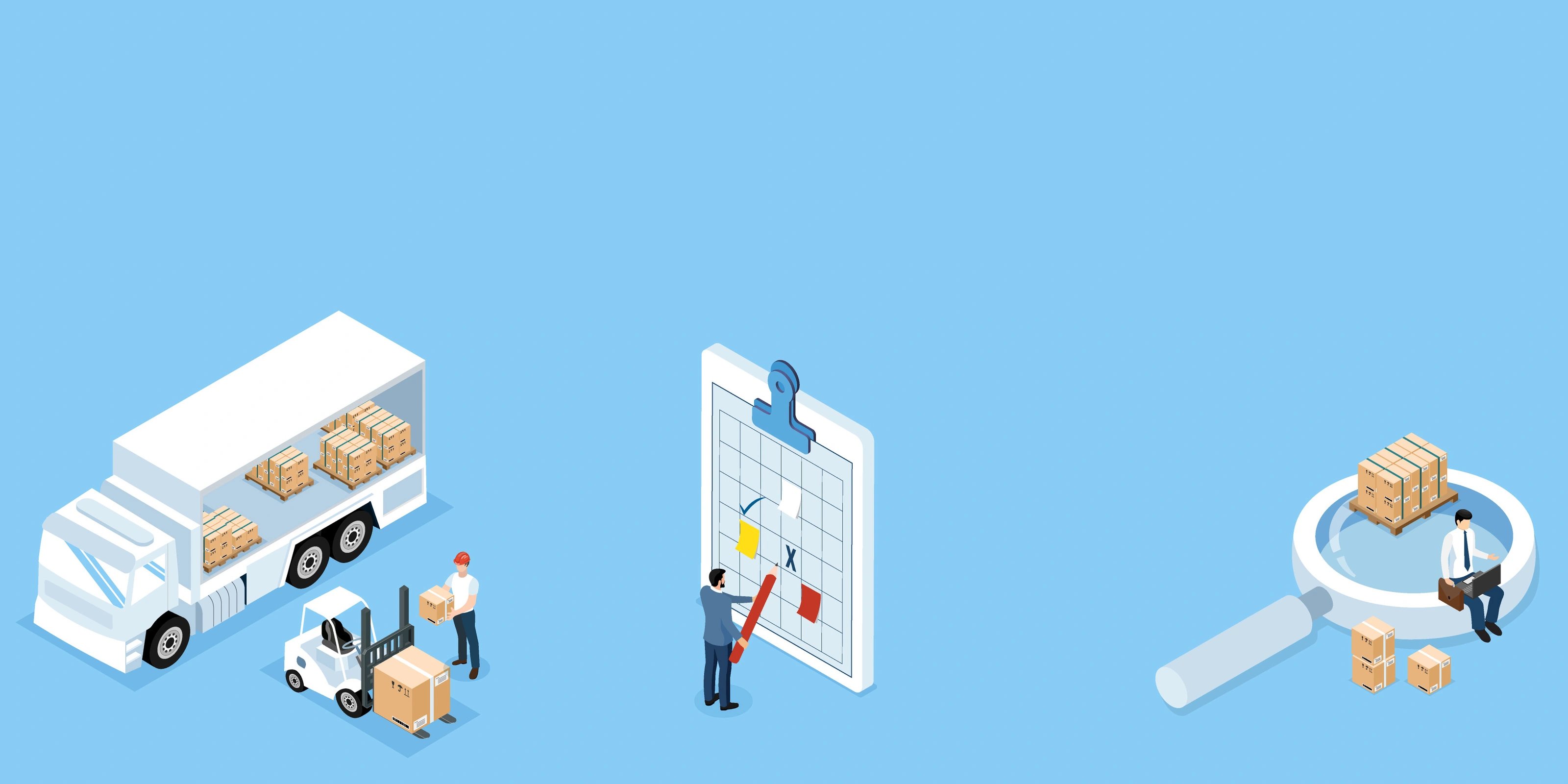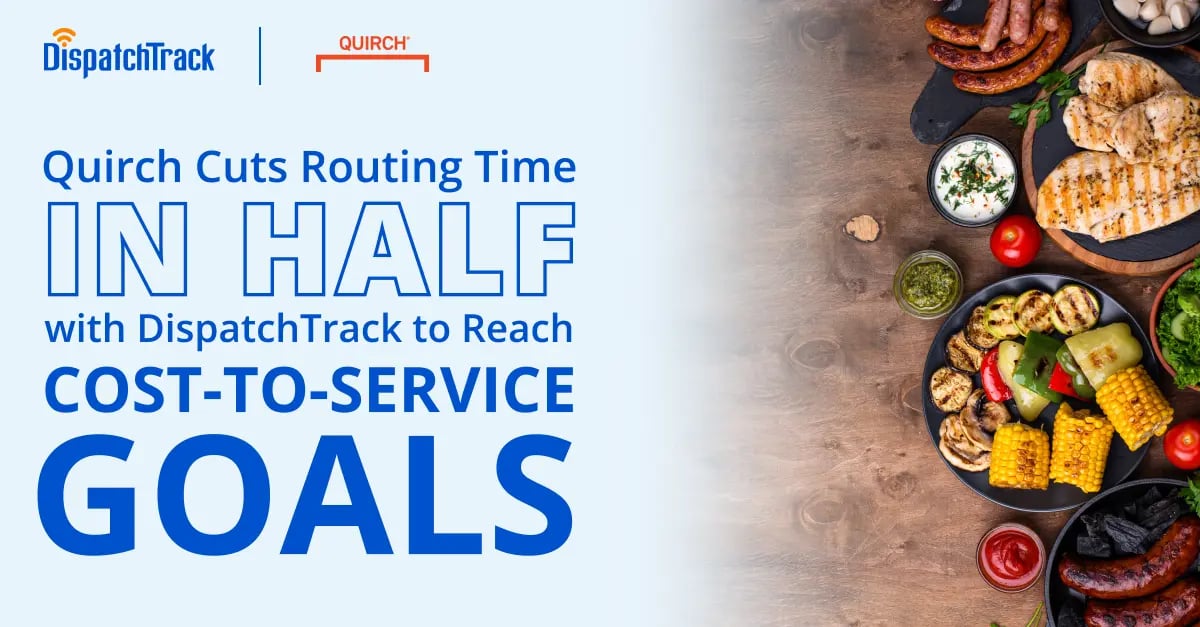Let’s say you’re a beverage distributor, and because of a traffic closure outside your control you're about to wind up delivering a number of cases to one of your top customers significantly later than you promised. To help smooth things over, you want to send a salesperson to meet the delivery truck when it arrives at the customer’s location an apology, a discount, or something else to make it clear how much you still value their business. At the same time, you’re operating in a state where merchandisers for alcoholic beverages need to arrive at the site alongside the shipment, which means you need to make sure they adjust their plans accordingly as well. How easy or difficult is it to coordinate all that in the moment?
 For most distributors, the answer to that question is going to depend on how much visibility there is between merchandising, sales, and delivery. If each function has real-time transparency into each other function’s workflows before, during, and after the delivery process, you can identify the need for some extra TLC in the moment. Not only can you identify it, you can act on it, but adjusting the schedules of sales and merchandising personnel to account for the late delivery. This is obviously still not ideal from the customer’s standpoint, but it’s a lot better than a late delivery with no explanation or followup.
For most distributors, the answer to that question is going to depend on how much visibility there is between merchandising, sales, and delivery. If each function has real-time transparency into each other function’s workflows before, during, and after the delivery process, you can identify the need for some extra TLC in the moment. Not only can you identify it, you can act on it, but adjusting the schedules of sales and merchandising personnel to account for the late delivery. This is obviously still not ideal from the customer’s standpoint, but it’s a lot better than a late delivery with no explanation or followup.
Conversely, if you’re not operating with that level of visibility—if sales, delivery, and merchandising operate in functional silos where planners struggle to coordinate—the situation looks quite different. Sure, you can still schedule some follow-up with a sales rep, but it might not be the same day. Meanwhile, the merchandiser might arrive well before the delivery truck and waste a significant amount of time on site twiddling their thumbs. In other words, the customer experience might be frustrating even above and beyond the lateness of the delivery.
In a nutshell, these two different versions of the same scenario, suggest an important point: that visibility and coordination between delivery, sales, and merchandising is a must-have for modern food and beverage distributors.
Why Coordination Across Functions Is a Challenge
Right now, the low-visibility scenario is the default for many food and beverage distributors across the country. Coordinating across functions tends to be a hurdle, and the technological status quo doesn’t do much to help with overcoming that hurdle. Different functions often use separate software solutions to manage their workflows, and the business as a whole lacks a single source of truth when it comes to serving customers.
In the absence of a single source of truth, making decisions about how to best approach each day’s customer interactions can become haphazard. Sales ops might want delivery to find a way to make a particular stop at a particular time, but neither department can say what the cost implications will be and thus have no way of making a data-driven decision. Sometimes there’s a discrepancy in data between the two systems that’s hard to resolve—but just as often there’s no usable data to speak of and the decision gets made based on gut feelings.
Once the deliveries are underway, this disconnect only becomes more exaggerated. With no direct insight into deliveries as they’re unfolding, sales personnel have nothing to go on. They might get a call from the distribution center at some point requesting they make a detour to a particular customer, or they might simply go about their days without any real coordination. Obviously, this doesn’t lead to the most efficient possible mode of ensuring efficient customer service and sales/delivery operations.
.png?width=1501&height=501&name=image%20(6).png)
How to Boost Cross-Functional Visibility
Though these hurdles to effective coordination might seem intractable, boosting coordination is often just a matter of connecting teams with a single software solution. For instance, if your last mile delivery management software is built to incorporate sales and merchandising teams into workflows and provide each function visibility into the others, you can start to create a smarter, more efficient approach to your distribution operations.
What might this look like in practice? For starters, you’d have a centralized repository for all your delivery related data, including customer time window requests, order frequencies, and order probabilities, as well as real-time data from deliveries as they unfold. This forms the basis of a single source of truth with which you can begin to make more data-driven decisions about how you serve your customers, including post-delivery experiences. You can use this centralized data to visualize actual delivery and service cost numbers for different scenarios. This, in turn, enables you to weigh potential requests from customers with an eye towards your profit and loss sheet.
Ideally, your solution would also offer a dedicated mobile app for salespeople and merchandisers that would enable them to track deliveries, access route information, receive alerts, and stay connected with delivery teams. This kind of connectivity can make a huge difference on the day of delivery. Instead of passively waiting for updates on situations that might impact their work, personnel from different teams can proactively monitor deliveries as they unfold and jump on potential exceptions quickly.
Benefits of Delivery, Sales, and Merchandising Integration
The way we laid out possible options for connecting sales, delivery, and merchandising within a single solution, distributors can set themselves up to reap a number of meaningful benefits:
- Faster exception responses: Instead of waiting until the next day or the day after to respond to a late delivery with an extra salesperson visit, integrated teams can send a salesperson to smooth over a late delivery before the delivery driver even gets there. This can make a huge difference in terms of customer retention over the long run.
- Easier cross-functional planning: You don’t want merchandisers to show up at delivery sites and find that they’ve got nothing to do. Luckily, when you integrate your systems more effectively, you can make sure that your plans make sense for every function, not just the one that’s doing the planning.
- More accurate costing: Calculating—to say nothing of predicting—your total cost to serve can be a challenge when each function is disconnected from the others. Plans that are cost-effective from a delivery perspective might not be as efficient when you factor in sales and merchandising requirements. With all these functions under one roof, technologically speaking, you can actually calculate and optimize your total cost to serve your customers.
- Reduced IT spend: By creating a more centralized system to handle multiple touchpoints, you can potentially reduce the need for redundant IT solutions across these three functions. Not only does this reduce the likelihood of data silos, it also lets you cut down spending on software solutions.
The ability to provide great customer service is one of the most valuable assets that any distributor has. And the ability to do that while still keeping delivery costs manageable is just as critical. That’s precisely why finding a way to connect sales, delivery, and merchandising within a single solution can be so impactful for food and beverage distributors. By creating visibility between these distinct functions, you pave the way for improved coordination, faster incident response management in the field, and ultimately reduced distribution costs across functions.
